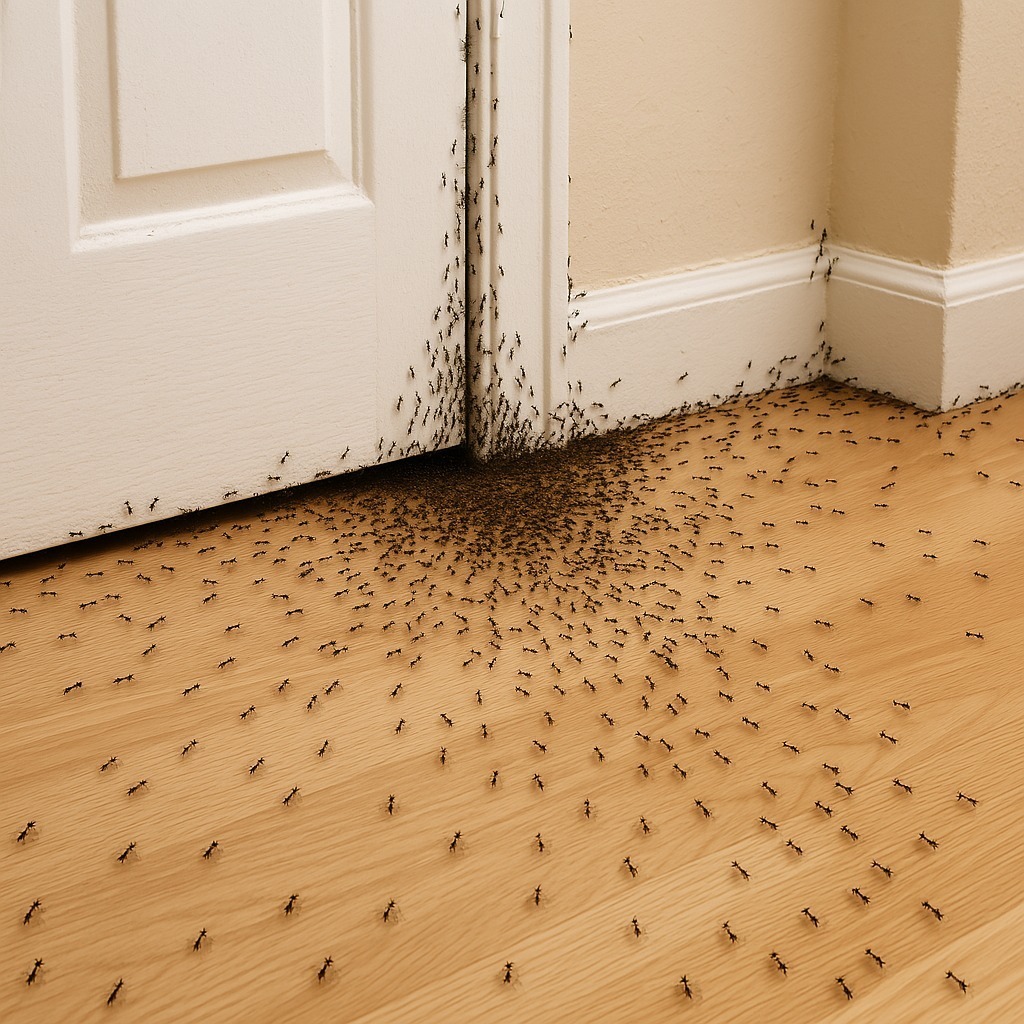ADVERTISEMENT
#### **4. Seasonal Changes**
Ants are more likely to invade your home during certain seasons. Spring and summer are prime times for ants to venture indoors in search of food, water, and a safe place to nest. During the winter months, ants may seek shelter inside homes to stay warm and protected from the cold. They may even enter in large numbers if their outdoor food supply becomes scarce or if their nest is disturbed by extreme weather.
#### **5. Pheromone Trails**
When a few ants enter your home in search of food, they leave behind a trail of pheromones—chemical signals that other ants can follow. This makes it easier for other ants to find the food source, leading to a larger trail of ants entering your home. Over time, ants will continue to use the same pheromone trail, which can lead to significant infestations if not addressed.
### **Signs of an Ant Infestation**
While spotting a few ants here and there might not be cause for alarm, it’s important to recognize the signs of a potential infestation. The presence of large numbers of ants or the consistent appearance of ants in your home may indicate that there’s a colony nearby, and it’s crucial to act quickly to prevent further problems.
Here are some signs to look for:
#### **1. Visible Ant Trails**
If you spot a line of ants marching across your kitchen counter or along the floor, you’re likely witnessing an ant trail. These trails are formed when ants are following the pheromone paths left behind by other ants. A single trail of ants isn’t usually a cause for panic, but it’s essential to eliminate the trail as soon as possible to prevent a full-fledged infestation.
#### **2. Ant Nests**
Finding an ant nest or mound in your home is a sure sign of an infestation. Depending on the species, ant nests can be located in various places, such as inside walls, under floorboards, or in kitchen cabinets. Carpenter ants, for example, are known to create nests in wooden structures, often leading to wood damage. If you find a nest, it’s essential to take action immediately.
#### **3. Excessive Numbers of Ants**
A few ants here and there are normal, but if you’re seeing ants in large numbers or on a regular basis, you may have an infestation. If ants are consistently appearing in certain areas of your home, it could indicate that they have established a colony nearby.
#### **4. Damaged Furniture or Wood**
Certain types of ants, particularly carpenter ants, can damage wooden furniture and structures in your home. If you notice holes or grooves in your furniture or wooden beams, it may be a sign that ants are nesting in the wood. Carpenter ants hollow out wood to create their nests, which can lead to significant damage over time.
#### **5. Ants in Unusual Locations**
Ants aren’t just confined to the kitchen. They can be found in various parts of your home, including bedrooms, bathrooms, and basements. If ants are showing up in places you wouldn’t expect—such as inside your pantry or bathroom—it could mean they have established a colony nearby.
—
### **The Types of Ants You Might Encounter in Your Home**
There are many species of ants that can invade your home, each with its own unique characteristics and behaviors. Understanding which species of ants you’re dealing with can help you determine the best approach for eliminating them.
#### **1. Carpenter Ants**
Carpenter ants are one of the most destructive types of ants in the home. Unlike termites, they don’t eat wood, but they do tunnel through it to create their nests. This can cause significant structural damage to your home if left untreated. Carpenter ants are typically larger than other species, and they’re often black or reddish-brown in color.
#### **2. Odorous House Ants**
Odorous house ants are small, brown or black ants that emit a foul, rotten smell when crushed. These ants are attracted to sugary foods and will often invade kitchens and pantries. While they’re not typically destructive, their strong odor and large numbers can be a nuisance.
**3. Pharaoh Ants**
Pharaoh ants are tiny, light brown or yellow ants that are known for their ability to infest homes year-round. They often nest in hidden places, such as inside walls, behind baseboards, or under appliances. These ants are particularly attracted to greasy foods and can be difficult to eliminate without professional help.
For Complete Cooking STEPS Please Head On Over To Next Page Or Open button (>) and don’t forget to SHARE with your Facebook friends
